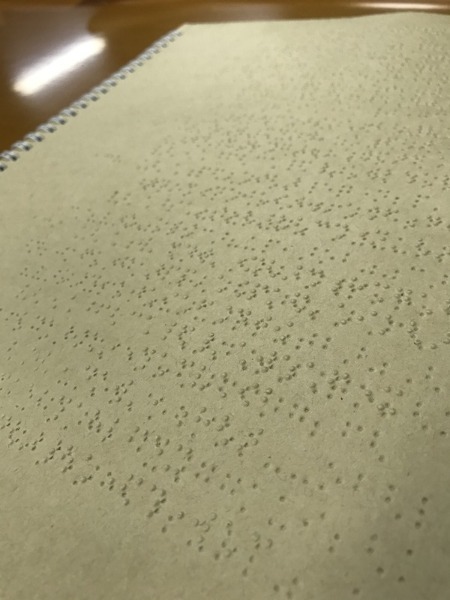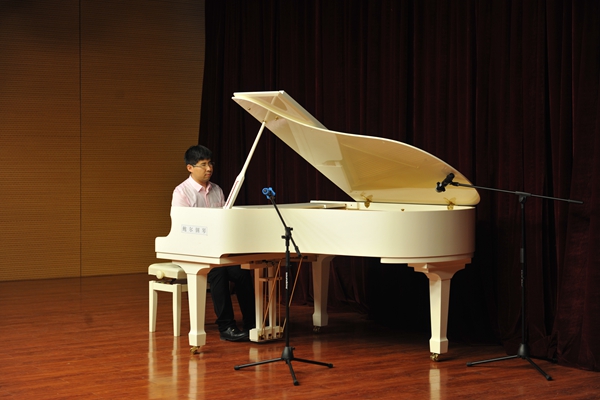
The China Braille Press in Beijing, together with the China Braille Library, has been publishing piano scores for the blind since 2011. The nearly 750 braille piano scores comprise the majority of the publisher's musical output.
Although there's no data to prove a growing trend, it's not rare to see media coverage of blind or visually impaired Chinese musicians achieving accolades in piano, flute, violin, vocal music, composition, and also, orchestra.
The company has also published scores for erhu, saxophone, and flute, as well as music theory references, textbooks, tool books, and art reviews.
Unlike Western music, traditional Chinese music usually applies a simpler way of notation. The notes are marked by numbers and the rhythms by underlines.
However, knowing the braille score well is a must, especially for the visually impaired learners who have to deal with complicated classical pieces or who want to step into the professional arena.
Today’s Story in the Story looks at how China is helping blind musicians achieve their goals by developing advanced braille music scores.

Braille score enables blind music learners to play in a more accurate, expressive and subtle way.(Photo: China Daily)
In China, it's not unusual for people with sight issues to learn traditional instruments like erhu and dizi, as well as accordion and guitar, through oral and hand-by-hand instruction from teachers.
Only by reading the braille repeatedly can they catch the subtlest details to play the music well, said Hu Haipeng, 36, a blind pianist.
His mother read out the score to help him learn and memorize the music in his mind until he was 14. The more difficult pieces pushed him to learn the braille musical notations.
Hao Qin, a braille score editor, recalled her school days when she had to transcribe regularly printed scores, applied by sighted people, into braille. With low visual acuity, it's quite a strenuous work for her to read the staves.
"The more braille scores we publish, the less transcription work visually impaired music learners have to deal with later," Hao said. She has been plowing through the work for nearly a decade.
To transcribe and edit the piano score for the blind requires editors mastering both the braille score and the stave-a scarce group in China, according to Gao Xu, director of the Blind Culture Research Institute attached to the library.
Gao is leading a team of three with low visual acuity, including Hao. It took their colleague Liu Ze half a month to transcribe a fairly simple score of around 15 pages into braille that occupies over 50 pages.
Therefore, they have mainly introduced braille scores from countries like Britain, the United States, Japan, South Korea, and France, which are re-edited and proofread before publishing, so that the format and layout would fit the reading habits of the blind in China.
Less than one-tenth of the published braille piano scores are fully produced by the team, but it's getting more complicated for the China Braille Press to continue copyright cooperation with foreign institutions in braille piano score publishing, Gao said.
The time when they could get help for free has gone. They have to make more prudent publishing plans and apply for state funds to support the cooperation.
Gao admits they have slowed down this part of work, but he's clear they have a long way to go. It has taken the effort of generations for countries like Britain and the US to accumulate braille scores.
In the near future, the team will change its focus to transcribing scores for traditional Chinese instruments and other Western instruments like violin, guitar, accordion, and flute.

Blind piano tuner Yang Kang spends some of his spare time helping the China Braille Press to proofread the braille score before publishing.(Photo: China Daily)
Nevertheless, there's no difference when displayed in braille.
There has been a trend in traditional Chinese music that has seen many new symbols created to cater to popular tastes, but there is no consistent application of them yet.
For traditional Chinese music, the lack of a comprehensive symbol system for braille score has added to the difficulty of transcription, Hao said.
Shi Xiaoyan, director of the publisher's braille compilation department, was once asked if they could publish some Italian language textbooks for the blind because it was required when learning opera. Unfortunately, they couldn't find someone who understood both the Italian and the braille to make proofreading possible.
Gao understands visually impaired piano learners are "a minority within a minority", but the key for the China Braille Press, the one and only braille publisher in China, to support the development of the blind is to guarantee the existence of such a service.
Their output lies quietly within China's biggest braille library, waiting to be discovered by the next visually challenged virtuoso.
(Produced by Nancy Yan Xu, Lance Crayon, Brain Lowe and Da Hang. Music by: bensound.com. Text from People's Daily)


